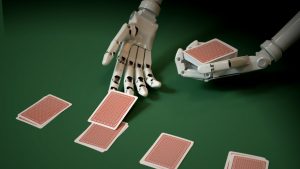
Learning to play games has been a great test for AI. Being able to generalise from relatively simple rules to find optimal solutions shows a form of intelligence that we humans always hoped would be impossible. Back in 1997, when IBMs Deep Blue beat Gary Kasparov in chess1 we saw that machines were capable of more than brute force solutions to problems. 20 years later2 and not only has AI mastered Go with Google’s DeepMind winning 4-1 against the world’s best player and IBM’s Watson has mastered Jeopardy, there have also been some great examples of game play with many of the games I grew up playing: Tetris, PacMan3, Space Invaders and other Atari games. I am yet to see any AI complete Repton 2. Continue reading Anything you can do AI can do better (?): Playing games at a new level






